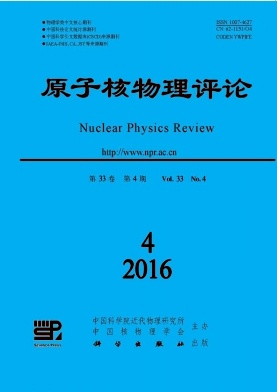|
[1]
|
KHACHATRYAN V, SIRUNYAN A M, TUMASYAN A, et al. (CMS Collaboration). J High Energy Phys, 2010, 2010(09):091. |
|
[2]
|
ALVER B, BACK B B, BAKER M D, et al. arXiv:nuclex/0709.4008, 2007. |
|
[3]
|
CUNQUEIRO L, DIAS DE DEUS J, PAJARES C. arXiv:hep-ph/0806.0523, 2009. |
|
[4]
|
LUZUM M, ROMATSCHKE P. arXiv:nucl-th/0901.4588v2, 2010. |
|
[5]
|
BOZEK P. arXiv:nucl-th/0911.2392, 2010. |
|
[6]
|
ABELEV B I, AGGARWAL M M, AHAMMED Z, et al. arXiv:nucl-ex/0903.2811, 2009. |
|
[7]
|
ABELEV B I, AGGARWAL M M, AHAMMED Z, et al. arXiv:hep-ex/0912.3977v2, 2010. |
|
[8]
|
ABELEV B I, AGGARWAL M M, AHAMMED Z, et al. (STAR Collaboration). Phys Rev C, 2009, 80(6):064912. |
|
[9]
|
AAD G, ABAIYAN T, ABBOTT B, et al. arXiv:hepex/1212.5198v3,2013. |
|
[10]
|
ABELEV B, ADAM J, ADAMOVA D, et al. (ALICE Collaboration). Phys Lett B, 2013, 719(1-3):29. |
|
[11]
|
SALGADO C A, ALVAREZ-MU~nIZ1 J, ARLEO F, et al. J Phys G, 2012, 39(1):015010. |
|
[12]
|
ADARE A, AIDALA C, AJITAN N N, et al. arXiv:nuclex/1303.1794v2, 2014. |
|
[13]
|
ADARE A, AFANASIEV S, AIDALA C, et al. (PHENIX Collaboration). Phys Rev Lett, 2011, 107(17):172301. |
|
[14]
|
ADLER S S, AFANASIEV S, AIDALA C, et al. (PHENIX Collaboration). Phys Rev C, 2006, 73(5):054903. |
|
[15]
|
ADLER S S, AFANASIEV S, AIDALA C, et al. (PHENIX Collaboration). Phys Rev Lett, 2006, 96(22):222301. |
|
[16]
|
ALVER B, BAKER M, LOIZIDES C, STEINBERG P. arXiv:nucl-ex/0805.4411v1, 2008. |
|
[17]
|
RYSKIN M G, MARTIN A D, KHOZE V A. J Phys G, 2011, 38(8):085006. |
|
[18]
|
DUMITRU A, DUSLING K, GELIS F, et al. Phys Lett B, 2011, 697(1):21. |
|
[19]
|
AVSAR E, FLENSBURG C, HATTA Y, et al. Phys Lett B, 2011, 702(5):394. |
|
[20]
|
ALDERWEIRELDT S, VAN MECHELEN P. arxiv:hepph/1203.2048v2, 2012. |
|
[21]
|
BOZEK P. Phys Rev C, 2012, 85(1):014911. |
|
[22]
|
WERNER K, KARPENKO I, PIEROG T. Phys Rev Lett, 2011, 106(12):122004. |
|
[23]
|
MCLERRAN L. arXiv:hep-ph/0807. 4095v1, 2008. |
|
[24]
|
LIU Fuhu, TIAN Tian, GAO Yaqin, et al. Adv High Energy Phys, 2014, 2014:296145 |
|
[25]
|
FAKHRADDIN S, RAHIM M A, LIU Fuhu. Nucl Phys A, 2011, 858(1):95. |
|
[26]
|
LIU Fuhu, MA Yinqun, DUAN Maiying. Chin Phys, 2005, 14(12):2458. |
|
[27]
|
LIU Fuhu, GAO Yaqin, TIAN Tian, et al. Adv High Energy Phys, 2014, 2014:725739. |
|
[28]
|
LI Baochun, WANG Yazhou, LIU Fuhu, et al. Phys Rev D, 2014, 89(5):054014. |
|
[29]
|
LIU Fuhu. Nucl Phys A, 2008, 810(1-4):159. |
|
[30]
|
LIU Fuhu, LI Junsheng. Phys Rev C, 2008, 78(4):044602. |
|
[31]
|
LIU Fuhu. Nucl Phys A, 2008, 808(1-4):160. |
|
[32]
|
ZHAO Hong, LIU Fuhu. Adv High Energy Phys, 2015, 2015:137058. |
|
[33]
|
LV Qiwen, LIU Lingling, LIU Fuhu, et al. J Kor Phys Soc, 2011, 59(4):2684. |
|
[34]
|
LV Qiwen, WEI Huarong, RAHIM MAGDA A, et al. Nucl Phys Rev, 2012, 29(1):25. |
|
[35]
|
LIU Fuhu. Phys Rev D, 2000, 63(3):032001. |






 甘公网安备 62010202000723号
甘公网安备 62010202000723号 DownLoad:
DownLoad: